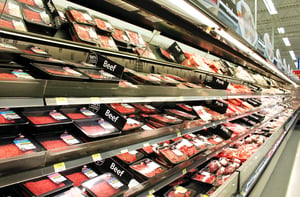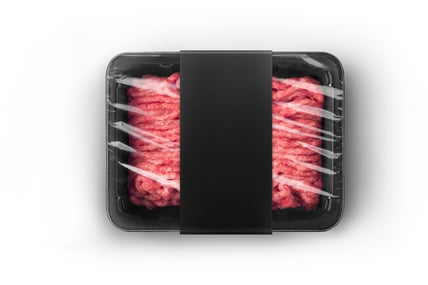 Food spoilage is one of the biggest contributors to food waste — accounting for over 21% globally — and much of it can be prevented. From oxidation and microbial growth to poor climate control and packaging failures, the causes are many, but the solution often starts with better packaging. Advanced packaging materials work hand‑in‑hand with Modified Atmosphere Packaging (MAP) technology to slow spoilage, extend shelf life, and reduce waste, all while preserving taste, texture, and nutrients.
Food spoilage is one of the biggest contributors to food waste — accounting for over 21% globally — and much of it can be prevented. From oxidation and microbial growth to poor climate control and packaging failures, the causes are many, but the solution often starts with better packaging. Advanced packaging materials work hand‑in‑hand with Modified Atmosphere Packaging (MAP) technology to slow spoilage, extend shelf life, and reduce waste, all while preserving taste, texture, and nutrients.
Continue reading to learn more about MAP packaging materials, and how ICPG's can help.
How MAP Packaging Materials Help Prevent Food Spoilage
The same oxygen in the air that allows us to breathe contributes to food spoilage through oxidation. Fats and oils in foods break down, causing off‑flavors and rancidity, while microbes such as bacteria, yeast, and mold thrive in oxygen‑rich environments, accelerating decay. Extending product shelf life requires more than just refrigeration — it demands specialized packaging materials and sterilization systems that protect food integrity. Combining these technologies with designs that also enhance brand appeal ensures products stay fresh, safe, and market‑ready for longer.
How Modified Atmosphere Packaging (MAP) Works
Modified atmosphere packaging (MAP) is the practice of modifying the composition of the internal atmosphere of a sealed food package in order to extend the shelf-life of the product. The need for this food processing technique arises from the short shelf life of food products such as meat, fish, poultry and dairy due to the presence of oxygen. The modification process works to lower the amount of oxygen in the headspace of the packaging, replacing it with either nitrogen, carbon dioxide or a combination of both. This can be accomplished through techniques such as gas flushing and compensated vacuum, which slow oxidation and hinder microbial growth.
The result is a longer shelf life without the need for preservatives or additives, while retaining the food’s natural taste, texture, and nutrients.
Market Applications for MAP Packaging
Modified atmosphere packaging is used across a wide range of food categories to protect freshness, enhance shelf life, and maintain product quality. Common applications include:
-
 Case-ready meat & poultry
Case-ready meat & poultry- Refrigerated processed meals
- On-the-go snacks
- Protein snacks
- Nuts & snack mixes
- Dairy products
- Fruits & vegetables
- Salad kits
- Instant meal kits
- Cookies
- Pre-made sandwiches
- Deli meats
Whether you’re packaging fresh produce, proteins, or ready‑to‑eat meals, choosing the right MAP packaging material is critical to extending shelf life, maintaining product quality, and minimizing food waste.
Compatible Materials for MAP Processing
In addition to the MAP process, choosing a material structure that provides a combination of oxygen and moisture barriers also helps to extend the shelf life and reduce food spoilage and waste. The choice of material structure must account for variables such as the type of food product, part design, processing conditions, distribution environment, and retail display requirements, as each factor directly impacts performance.
Once these variables have been defined, further details such as barrier specifications, shelf-life expectations, part geometry, material attributes and handling considerations are evaluated to design a rollstock structure that delivers optimal barrier performance. ICPG material solutions compatible with the MAP process can be customized to meet target extended shelf-life requirements with custom multi-layer and laminated coextruded barrier roll stock structures.
ICPG’s MAP Packaging Material Solutions
ICPG's modified atmosphere packaging solutions include:
- Polypropylene combined with custom barrier laminations or coextrusions
- Polyethylene combined with custom barrier laminations or coextrusions
- Polystyrene combined with custom barrier laminations or coextrusions
ICPG material solutions are produced from our extensive resin portfolio using materials such as our innovative XPP™ Enhanced Barrier Polypropylene which offers up to 80% improvement to OTR and MVTR barrier properties before the incorporation of EVOH, allowing the opportunity for structure optimization for extended shelf-life performance in the form of a simplified structure that is 100% recyclable using Resin ID Code (RIC) #5. This material also offers enhancements to key properties, including controlled shrinkage and enhanced stiffness to offer a viable replacement solution for PS replacement initiatives for thermoforming and form-fill-seal applications.
Interested in learning more about how you can enhance the performance and sustainability of your modified atmosphere packaged product? Download our XPP Enhanced Barrier Polypropylene product sheet or reach out to our team and start the conversation today.




